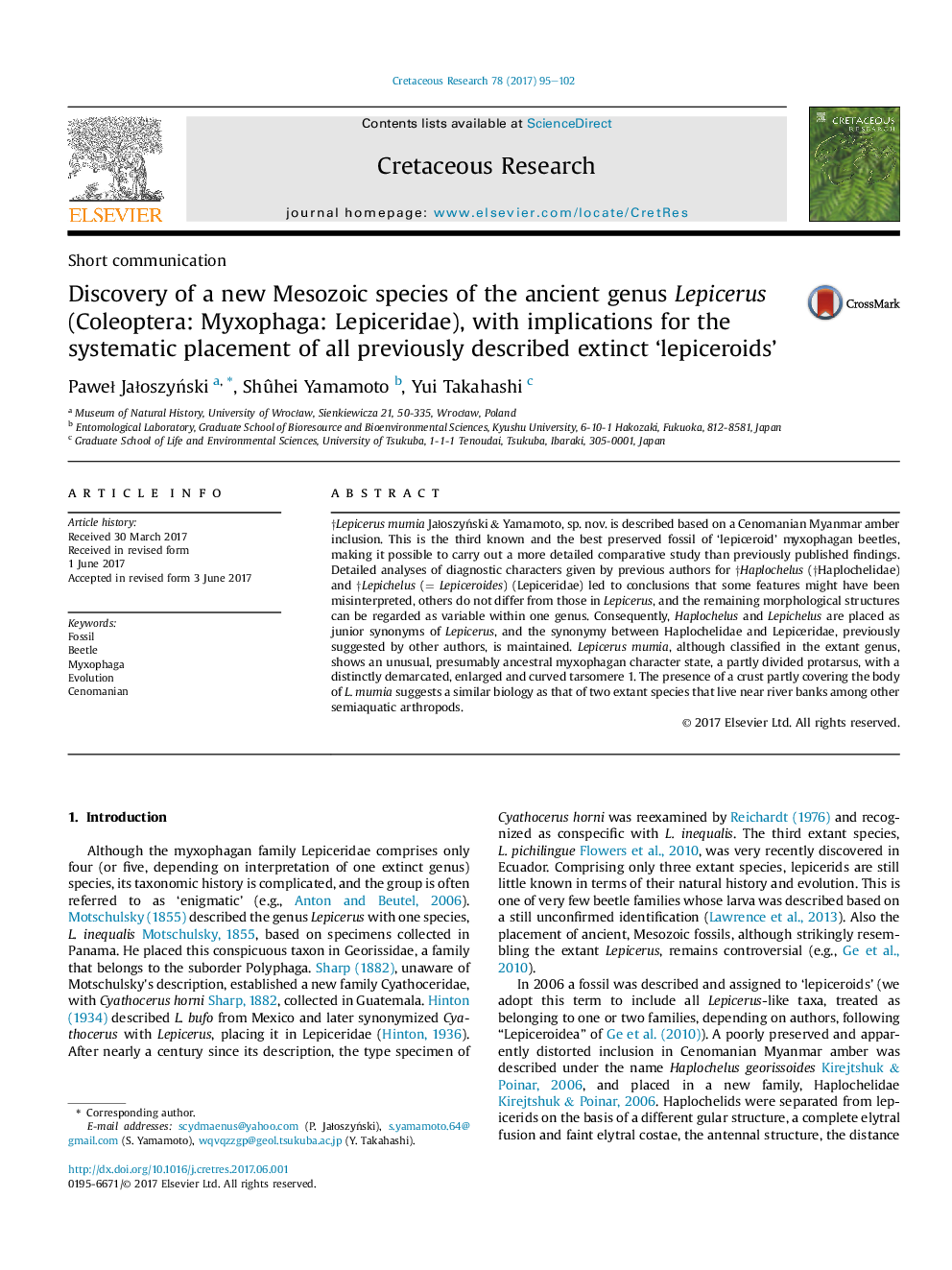| Article ID | Journal | Published Year | Pages | File Type |
|---|---|---|---|---|
| 5787933 | Cretaceous Research | 2017 | 8 Pages |
Abstract
â Lepicerus mumia JaÅoszyÅski & Yamamoto, sp. nov. is described based on a Cenomanian Myanmar amber inclusion. This is the third known and the best preserved fossil of 'lepiceroid' myxophagan beetles, making it possible to carry out a more detailed comparative study than previously published findings. Detailed analyses of diagnostic characters given by previous authors for â Haplochelus (â Haplochelidae) and â Lepichelus (= Lepiceroides) (Lepiceridae) led to conclusions that some features might have been misinterpreted, others do not differ from those in Lepicerus, and the remaining morphological structures can be regarded as variable within one genus. Consequently, Haplochelus and Lepichelus are placed as junior synonyms of Lepicerus, and the synonymy between Haplochelidae and Lepiceridae, previously suggested by other authors, is maintained. Lepicerus mumia, although classified in the extant genus, shows an unusual, presumably ancestral myxophagan character state, a partly divided protarsus, with a distinctly demarcated, enlarged and curved tarsomere 1. The presence of a crust partly covering the body of L. mumia suggests a similar biology as that of two extant species that live near river banks among other semiaquatic arthropods.
Keywords
Related Topics
Physical Sciences and Engineering
Earth and Planetary Sciences
Palaeontology
Authors
PaweÅ JaÅoszyÅski, Shûhei Yamamoto, Yui Takahashi,
